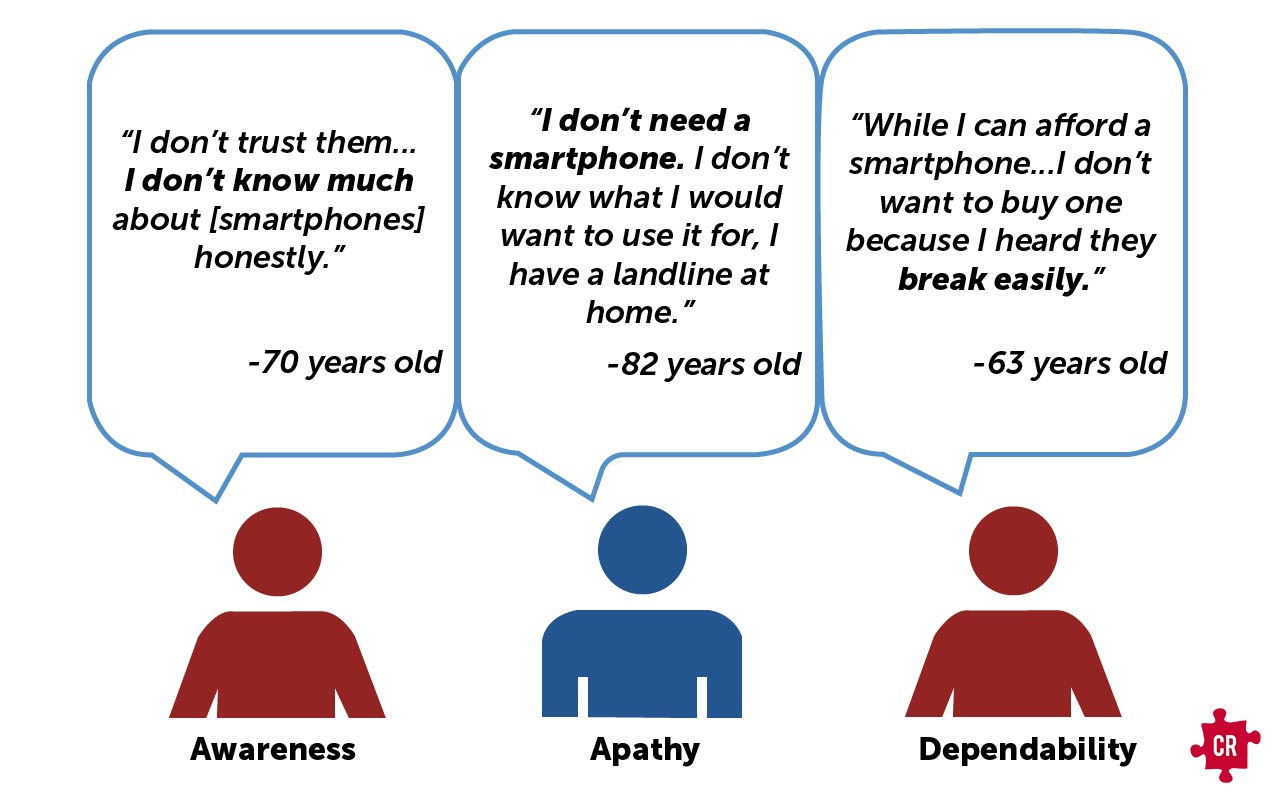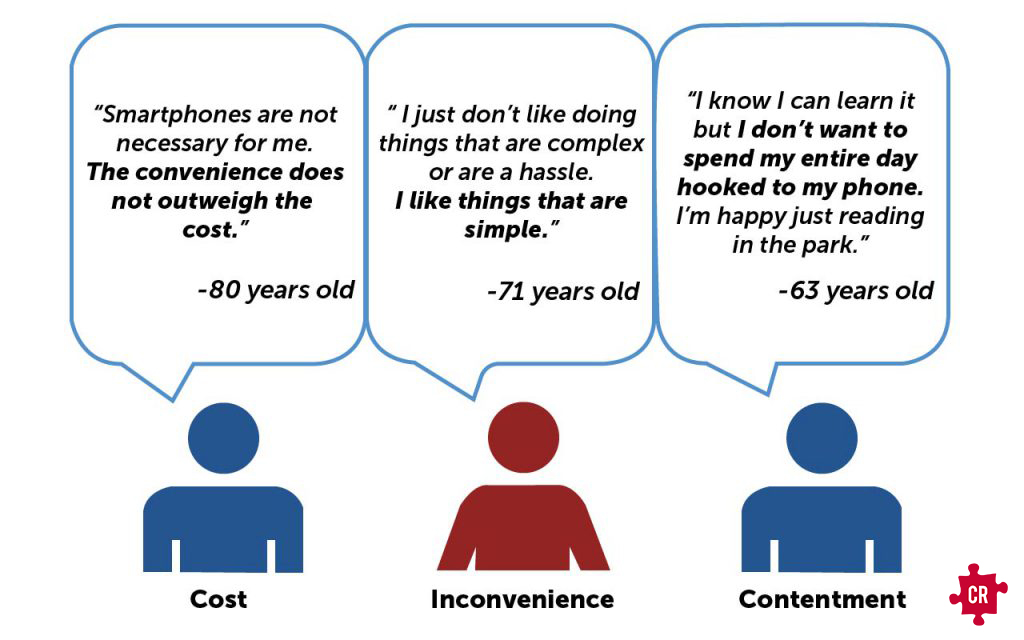Dormant – People who do not possess a smartphone or smartphone-like technology (e.g. iPad) and have no interest and/or ability to acquire.
There are many reasons why elderly do not adopt new technologies, or in other words, are “dormant.” However, the voices of the elderly in China often go unheard on the topic of technology. With this in mind, over the last few weeks, Collective has been conducting in-depth qualitative and quantitative research into the barriers that prevent the Chinese elderly from entering the smartphone and tablet market. The following represent the major barriers to smartphone ownership:

Awareness
Many of the elderly lack information or have acquired misinformation about smartphone technology. Some have claimed that although they know a smartphone does more than a regular cell phone, they don’t really understand the breadth of what a smartphone does. They have also often voiced extreme fears of being tricked or scammed as well as feared that using a smartphone would be severely detrimental to their health.
Apathy
Various seniors have demonstrated a lack of interest in smartphone technology because they perceive smartphones to add no value or utility to daily life. They are disinterested in learning more about new technology because they claim that current technology already sufficiently satisfies their needs. Although they may admit that their current methods might not be as efficient or convenient as they would like, they would rather stick to their old routines than to venture to try something new. Overall, these elderly may not be particularly happy or content with their current way of life, but they do not consider smartphones or tablets as a viable way to improve it.
Dependability
There is a pervasive lack of trust in the fundamental quality of smart technology. Many elderly have expressed their view that smartphones are very transient and require constant replacement or updates. Unlike the youth, the elderly are not keen to constantly upgrade from an “old” model to a “new” model within a few years. Oftentimes, these individuals are deterred from adopting smart technology because they cannot understand why one should switch from a regular cell phone, which they might have been using for a decade, to a smartphone with a perceived lifespan of only one to two years.

Cost
Cost is always a major factor in the adoption of a new product. To many, the convenience and utility of smartphones simply cannot measure up to the perceived inherent financial burdens (i.e. data plans, maintenance costs, etc.). This factor especially impacts lower-income elderly or those who are financially dependent on others, since the cost would effectively bar them from adopting smart technology regardless of all other factors.
Inconvenience
Showcased in the opening quote to this article, many elderly are inhibited by the perceived hassle and difficulty of learning, adopting, and adapting to the usage of smartphone technology. Although one of the major purposes of technology is to increase convenience for the user, this actually poses a significant barrier to Chinese elderly. Because seniors favor possessing a sense of independence and autonomy, many elderly become frustrated if they are unable to learn on their own, and they would rather give up on ever using a smartphone than having to depend on or ask others for help.
Contentment
Finally, one of the most interesting barriers to entry we found was the elderly generation’s overall satisfaction with life. Several elderly seemed to enjoy the simple moments in life, treasuring their time spent reading or strolling in the park over the use of any smartphone. Instead of seeing the smartphone as a way to add value to their life, they see it as a possible detriment or “a waste of time.” These individuals believe that they have already found the best way to pass their time, and thus, they don’t want to change a thing.
Conclusions
By gaining insights into the barriers to entry and reasons for inertness of Chinese elderly, we at Collective are building the foundation to further investigate possible solutions and uncover opportunities for reaching out to China’s aging population.
Furthermore, identifying barriers to entry sheds light on the elderly’s needs and wants from technology, defining the path for future technological innovation. In fact, even when the individual possesses the desire for ownership, it is still unlikely that the individual will be able to adopt the technology if one of the aforementioned barriers exists. In order to “bridge the gap”, an individual must overcome all six barriers, which can be a formidable task. Therefore, it is important to keep these reasons in mind when mobilizing these “dormant” individuals and integrating them better into the smart technology society to achieve a better, more effective, and sustainable solution to seniors’ pressing needs.
For more information on Chinese elderly and technology, keep an eye out for Collective’s overarching report to be released in the coming weeks.
This article was written by Crystal Zheng, Research Analyst at Collective Responsibility.
Featured Image Credit: medicaltourismmag.com
